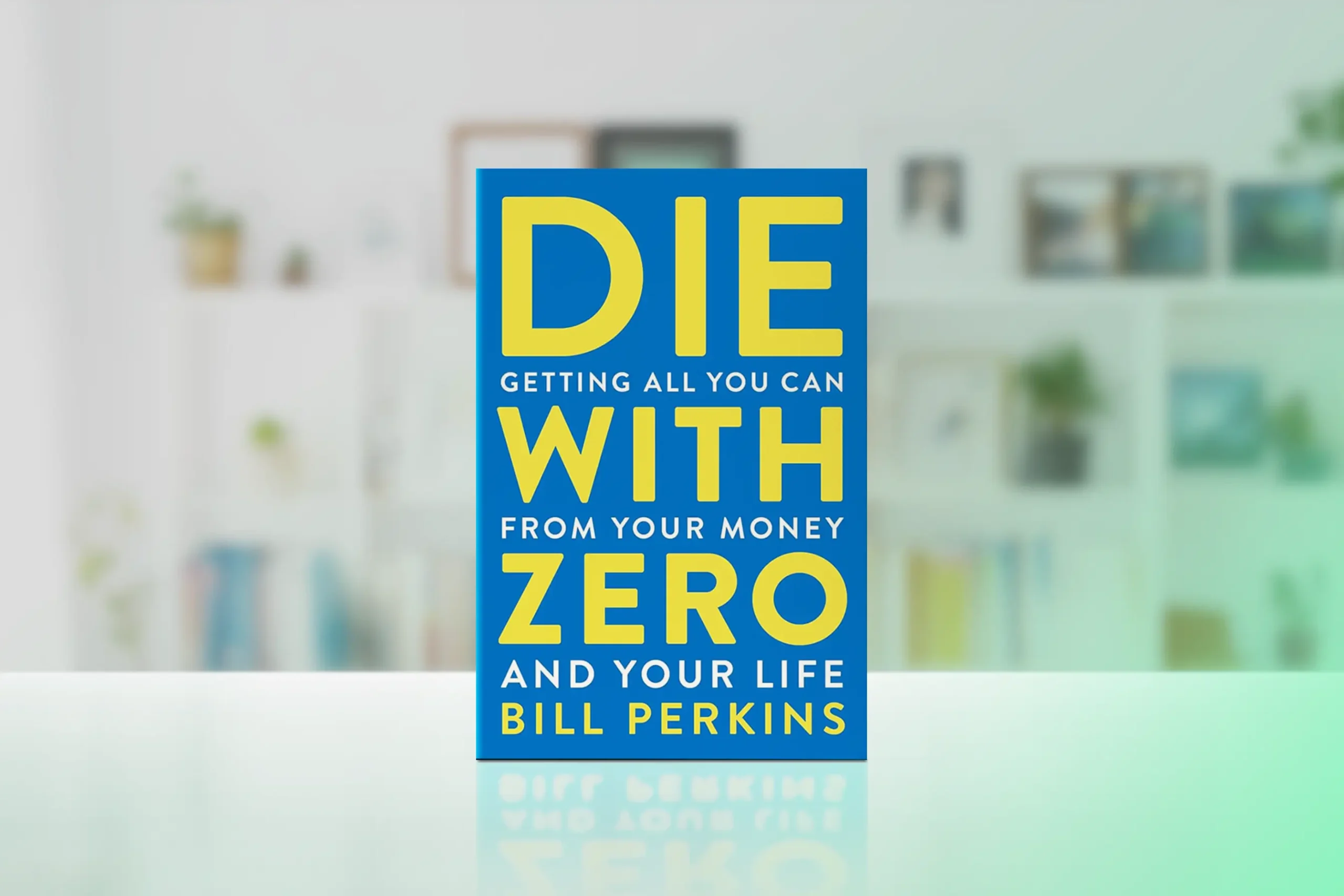Do you ever feel stuck in a cycle—working hard, only to see your paycheck disappear into bills before the month even ends? If the idea of financial independence feels more like a fantasy than a plan, especially when you’re starting from with a small amount of money (or less with nothing), you’re not alone. Follow these 10 steps to financial independence to go from zero to financial hero.
Inside this article:
What is Financial Independence
Financial independence means reaching a point where your money works for you—your passive income covers your expenses, and working becomes a choice, not a necessity. While the idea may seem ambitious, the good news is that even small, consistent actions—like those in this article—can build lasting momentum toward your goal.
The global financial outlook can feel daunting, with the World Economic Forum report projecting a $400 trillion retirement savings gap by 2050. Many retirees today risk outliving their savings, especially women due to longer lifespans and lower average earnings. But this isn’t just a warning—it’s a wake-up call. With the right tools and mindset, you can take control of your financial future, starting today.
Financial Freedom vs. Financial Independence
Financial freedom means you don’t worry about money day-to-day. Financial independence means you no longer need to work because your passive income covers everything. Both aim for control—freedom offers flexibility, independence offers total self-sufficiency.
Despite these challenges, you don’t need to start with advantages to achieve financial independence. What matters is having a roadmap and taking consistent action. Think of it as building your escape route—one step at a time, regardless of where you begin.
Step 1. Face your financial reality
Start by getting brutally honest about where you stand financially. List all your debts, calculate your net worth (even if it’s negative), and track your spending for at least two weeks. This baseline isn’t about feeling guilty—it’s about gaining clarity.
Why it’s important: According to behavioral economist Dan Ariely, we often avoid looking at our finances because of psychological pain, but this avoidance only makes things worse. Research shows that people who regularly track their financial situation are much more likely to achieve their money goals.
Try this: Set aside one hour this weekend with your favorite beverage and review three months of bank statements. Look for patterns, not problems.
Step 2. Master the art of starter budget
Create what financial expert Ramit Sethi calls a “conscious spending plan” rather than a restrictive budget. Focus first on covering your four core needs: housing, food, transportation, and debt obligations.
Why it’s important: In “I Will Teach You to Be Rich,” Sethi explains that most budgets fail because they’re too restrictive. Instead, he recommends spending extravagantly on things you love, but cutting costs mercilessly on things you don’t. Financial independence starts with spending aligned with your values.
Quick tip: Use the 50/30/20 rule as a starting point: 50% of income to needs, 30% to wants, and 20% to savings and debt repayment.
Step 3: Boost your income
While cutting expenses is important, there’s a limit to how much you can cut. Your earning potential, however, is theoretically unlimited. Look for opportunities to increase your income through side gigs, freelancing, or asking for a raise.
Why it’s important: According to Grant Sabatier, author of “Financial Freedom,” increasing your income is the most powerful lever for building wealth. He went from nearly broke to financially independent in five years by focusing on income growth while keeping his expenses relatively flat.
Try this: Identify one skill you already have that people might pay for, and offer it to three people this week.
Step 4. Build your financial safety net
Before aggressively paying down debt or investing, build a starter emergency fund of $1,000. This creates a buffer between you and life’s inevitable surprises.
Why it’s important: Research based on data from the Financial Industry Regulatory Authority shows that financial stability increases significantly once you have even a small emergency fund. Dave Ramsey, author of “The Total Money Makeover,” calls this initial emergency fund “Baby Step 1” because it prevents you from going deeper into debt when emergencies arise.
Remember: Your emergency fund is not an investment—it’s insurance. Keep it accessible in a high-yield savings account.
Step 5. Tackle high-interest debt
Once you have your starter emergency fund, focus intensely on eliminating high-interest debt. Use either the debt snowball method (paying off smallest balances first for psychological wins) or the debt avalanche method (paying highest interest rates first for mathematical wins).
Why it’s important: According to Vicki Robin, co-author of “Your Money or Your Life,” debt is essentially “reverse income”—money you’ve already spent from your future self. The average American household with credit card debt pays over $1,380 in interest annually—money that could be building wealth instead.
Quick tip: If you’re emotionally drained by debt, use the snowball method. If you’re motivated by efficiency, use the avalanche method.
Step 6. Track all your money
Use a tracking system that works for you—whether it’s an app, a spreadsheet, or even a notebook. The goal is to know where your money is going so you can redirect it to what matters most.
Why it’s important: A 2023 study found that the simple act of tracking spending reduces unnecessary purchases. As Peter Drucker famously said, “What gets measured gets managed.”
Try this: Set a 5-minute daily check-in with your money. This tiny habit, recommended by behavioral scientist BJ Fogg in his book “Tiny Habits,” can transform your financial awareness.
Step 7: Automate for better habits
Set up automatic transfers for savings, investments, and bill payments. This removes the need for willpower and ensures your financial priorities happen before discretionary spending.
Why it’s important: Behavioral economist Richard Thaler, who won a Nobel Prize for his work on nudges, found that automatic enrollment in retirement plans increased participation from 40% to 90%. In his book “Nudge,” he explains that making good behaviors automatic dramatically increases success rates.
Remember: Automation works because it harnesses the power of default settings—you have to actively stop a good behavior rather than actively start one.
Step 8: Invest consistently
Even if you can only invest $50 a month, start now. Time in the market beats timing the market, and compound interest is most powerful over decades, not years.
Why it’s important: According to JL Collins, author of “The Simple Path to Wealth,” the most important factors in investment success are starting early, keeping costs low, and staying the course. A study by Vanguard found that someone who invests $10,000 at age 25 could have over $100,000 more at retirement than someone who waits until age 35.
Quick tip: Start with a low-cost index fund in a tax-advantaged account. It’s the investing equivalent of learning to walk before you run.
Real talk: My biggest financial regret is not starting to invest sooner because I thought my small contributions “wouldn’t matter.” They would have mattered enormously over time.
Step 9: Create multiple income streams
Work toward building income sources that don’t require your active time. This might include dividends from investments, rental income, royalties, or digital products.
Why it’s important: The average millionaire has seven income streams, according to “The Millionaire Next Door” by Thomas J. Stanley. Multiple income sources provide both security and opportunity—if one source dries up, you have others to fall back on.
Try this: Look for one way to earn money from something you’ve already created, learned, or built. Could you teach others, create a guide, or consult in your area of expertise?
Step 10. Define what “enough” means
Financial independence isn’t just about numbers—it’s about knowing what you’re aiming for. Take time to envision what your “enough” looks like: the lifestyle, location, activities, and relationships that constitute your good life.
Why it’s important: In his book “Die With Zero,” Bill Perkins argues that the goal shouldn’t be to accumulate the most money, but to optimize life experiences. Without a clear definition of “enough,” the pursuit of more can become an endless treadmill.
Remember: Your definition of financial independence is personal. Don’t let others’ expectations determine your finish line.
Your Journey to Financial Independence
Financial independence isn’t an overnight transformation—it’s a series of consistent choices that compound over time—but the destination is worth the effort. Each step builds on the one before, creating momentum that eventually becomes unstoppable.
Research shows that financial security contributes significantly more to life satisfaction than simply having a high income. It’s not about being rich; it’s about having options and control over your own time.
What would you do differently if money weren’t dictating your daily choices? How might your relationship with work change if you were working by choice rather than necessity?
Start where you are, use what you have, and do what you can. The path to financial independence begins with a single step—and you’ve already taken it by reading this article.
Related Reading:
- Mastering Your Money: Financial Freedom in Every Stage of Life
- How to Set and Achieve Financial Goals That Align with Your Life Purpose
- Smart Spending: Tips for Managing Day-to-Day Expenses
- Financial Habits: How to Build Better Habits and Achieve Financial Freedom
- How to Build Wealth: From Saving to Investing
Important Disclaimer:
This article is for educational purposes only and should not be considered financial advice. This article is designed to help you understand investing fundamentals and develop a framework for thinking about your financial future. Every individual’s financial situation, goals, risk tolerance, and time horizon are unique. Before making any investment decisions, consider consulting with a qualified financial advisor who can provide personalized guidance based on your specific circumstances.
Past performance does not guarantee future results. All investments carry risk, including the potential loss of principal. Market conditions, economic factors, and individual circumstances can significantly impact investment outcomes. The examples and scenarios presented in this guide are illustrative and based on historical averages—actual results will vary.
Not all investment strategies are appropriate for all investors. What works for one person may not work for another. This guide should serve as a starting point for your financial education, not a substitute for professional financial advice tailored to your situation.
Helpful Resources:
-
NAPFA: Connects consumers with fee-only fiduciary financial advisors who must put client interests first
-
CFP Board: Directory of Certified Financial Planner professionals with strict ethics and education standards
-
Investor.gov: Education initiative from the SEC and FINRA offering free resources on investments
-
JumpStart: Nonprofit dedicated to financial education with curated resources and tools
-
Money Helper: Government-backed financial guidance and planning tools





